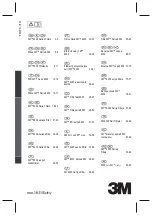
0. Introduction - Specifications
Workshop Service Manual for CENTORA 7280-7282 Combine Range - EN_D3111800M2
17
0.5
Practical advice
Safety
When working on any machine, the first thing you must
be aware of is your own safety and that of others. In order
to work without risk, it is important to understand what
the work actually involves, to use implements and any
equipment needed correctly, and, finally, to use your
head at all times.
Troubleshooting
The following method can be used to help locate faults in
the machine based on the information in the workshop
manual.
The method involves going through a number of logical
steps in order to identify, localise and repair the fault:
•
Establish the nature of the problem.
•
List possible causes.
•
Rule out causes.
•
Carry out the checks in the right order in order to find
the right cause.
•
Compare the approximate useful life remaining with
the cost of spare parts and labour.
•
Carry out the repair that was found to be necessary.
•
Check that the components and functions affected
are working correctly.
Handling heavy objects
Unless otherwise indicated, adjustable lifting tackle must
always be used for disassembly. All lifting straps or
chains must be parallel with each other and hang as ver-
tically as possible in relation to the object being lifted. If
the straps or chains are designed for a much greater lift-
ing capacity than the weight of the current load, it is per-
missible to use straps and chains in a triangular arrange-
ment (2, 3 or 4 straps or chains from the same ring under
the tackle hook).
Please note that when a tilted component is removed,
the lifting eye will have a much smaller capacity if the
angle between the load-bearing elements and the object
is less than 90° (right and wrong lifting method). The lift-
ing eye must never be bent. The same applies to the
yokes, which must only be subjected to tensile stress. A
length of pipe and a disc can be used to reduce the load
on the lifting eye.
Fig. 2
00001
Right
Wrong











































